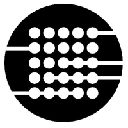-
 Bitcoin
Bitcoin $119100
-0.58% -
 Ethereum
Ethereum $4278
-0.66% -
 XRP
XRP $3.164
-1.81% -
 Tether USDt
Tether USDt $1.000
0.01% -
 BNB
BNB $811.7
0.11% -
 Solana
Solana $176.3
-3.92% -
 USDC
USDC $0.9999
0.01% -
 Dogecoin
Dogecoin $0.2255
-4.43% -
 TRON
TRON $0.3480
2.60% -
 Cardano
Cardano $0.7828
-3.40% -
 Hyperliquid
Hyperliquid $43.59
-4.94% -
 Chainlink
Chainlink $21.34
-3.88% -
 Stellar
Stellar $0.4443
-0.97% -
 Sui
Sui $3.697
-5.60% -
 Bitcoin Cash
Bitcoin Cash $596.5
4.16% -
 Hedera
Hedera $0.2498
-5.10% -
 Ethena USDe
Ethena USDe $1.001
-0.03% -
 Avalanche
Avalanche $23.11
-4.00% -
 Litecoin
Litecoin $121.1
-1.75% -
 Toncoin
Toncoin $3.397
0.42% -
 UNUS SED LEO
UNUS SED LEO $9.002
-1.29% -
 Shiba Inu
Shiba Inu $0.00001307
-4.57% -
 Uniswap
Uniswap $11.20
0.30% -
 Polkadot
Polkadot $3.901
-4.75% -
 Cronos
Cronos $0.1698
3.07% -
 Ethena
Ethena $0.8122
-3.72% -
 Dai
Dai $1.000
0.03% -
 Bitget Token
Bitget Token $4.416
-1.13% -
 Monero
Monero $263.9
-0.82% -
 Pepe
Pepe $0.00001130
-7.37%
What is the staking service of OKX platform?
OKX offers various crypto staking options, including PoS, delegated, and locked staking, with varying APYs and risk levels; users can earn passive income but should understand associated market volatility and smart contract risks.
Mar 18, 2025 at 07:06 pm
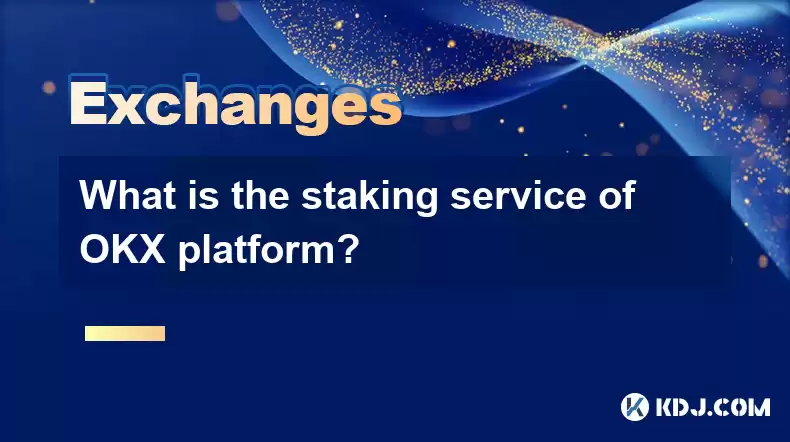
What is the Staking Service of the OKX Platform?
Key Points:
- Understanding OKX Staking: OKX offers a variety of staking services, allowing users to earn passive income by locking up their cryptocurrencies. This involves different mechanisms, risk profiles, and reward structures. We will delve into the specifics of each.
- Types of Staking Offered: OKX supports various staking methods, including Proof-of-Stake (PoS) consensus mechanisms, delegated staking, and locked staking with varying lock-up periods. We'll explore the nuances of each and their implications for users.
- Risk Assessment and Security: While staking offers potential rewards, it also carries inherent risks. We will examine the security measures implemented by OKX to mitigate these risks and how users can assess their own risk tolerance before participating.
- Reward Structures and APYs: The annual percentage yield (APY) on staked assets varies considerably depending on the cryptocurrency, the staking method, and market conditions. We will explore how these factors influence returns and help users understand the potential profitability.
- Navigating the OKX Staking Interface: We will provide a step-by-step guide to navigating the OKX platform and utilizing its staking services, including the process of selecting assets, setting up stakes, and managing your staked assets.
- Understanding OKX Staking:
OKX's staking service provides a platform for users to earn passive income by locking up their crypto assets. Unlike traditional savings accounts, which typically offer minimal returns, staking allows users to participate directly in the security and validation of a blockchain network. This participation is rewarded with newly minted tokens or transaction fees, resulting in a potentially higher return on investment. However, it's crucial to understand that the rewards are not guaranteed and are subject to market volatility and network conditions. The OKX platform simplifies the staking process, eliminating the technical complexities often associated with running a validator node independently. Users can stake a wide range of cryptocurrencies, each with its own unique staking requirements and reward structures. Understanding these differences is crucial for making informed decisions about which assets to stake and for how long. OKX also offers various staking products, including flexible staking options which allow for withdrawals at any time (though this may reduce rewards), and locked staking, which offers higher returns in exchange for a commitment to lock your assets for a specific period. The platform provides detailed information on the risks and rewards associated with each staking option, empowering users to make choices that align with their risk tolerance and financial goals. This transparency is a key feature that distinguishes OKX's staking service from others in the market. The platform also regularly updates its offerings to include new and emerging cryptocurrencies, ensuring users have access to a diverse range of staking opportunities. The user interface is designed for ease of use, even for those with limited experience in cryptocurrency investing. However, independent research and due diligence are always recommended before committing any assets to staking.
- Types of Staking Offered:
OKX supports a diverse range of staking methods, each catering to different user needs and risk profiles. One prominent type is Proof-of-Stake (PoS) staking. In PoS networks, users are rewarded for locking up their tokens and validating transactions. The amount of reward is typically proportional to the amount staked, but the specific APY varies greatly depending on the cryptocurrency and network conditions. Delegated staking is another option available on the OKX platform. This allows users to delegate their tokens to a validator node operated by OKX or a third-party validator. This is particularly beneficial for users who don't have the technical expertise or resources to run their own validator node. The rewards are shared between the delegator and the validator, with the delegator receiving a portion of the rewards based on their contribution. The choice between self-staking and delegated staking depends on factors such as technical skills, the amount of tokens held, and risk tolerance. Locked staking is yet another option offered by OKX. This involves locking up your tokens for a predetermined period, typically ranging from a few days to several months or even years. In return for this commitment, users often receive higher APYs compared to flexible staking options. The longer the lock-up period, the higher the potential rewards, but it also increases the risk associated with potential price fluctuations during the lock-up period. OKX provides users with clear information on the lock-up periods and the corresponding APYs for each locked staking option, enabling informed decision-making. Finally, OKX may offer specialized staking products tailored to specific cryptocurrencies or protocols, each with its own unique terms and conditions. Users should carefully review these terms before participating to ensure they fully understand the risks and rewards involved. Regularly checking the OKX platform for updates on available staking options and APYs is crucial to stay informed about the latest opportunities.
- Risk Assessment and Security:
While staking offers the potential for lucrative passive income, it’s crucial to acknowledge and mitigate associated risks. One primary risk is the inherent volatility of the cryptocurrency market. Even with attractive APYs, the value of the staked assets can fluctuate significantly, potentially leading to losses despite the staking rewards. Smart contract risks are another concern. Staking often involves interacting with smart contracts, which are susceptible to bugs or vulnerabilities. A security breach in a smart contract could result in the loss of staked assets. OKX employs various security measures to mitigate these risks, including rigorous audits of smart contracts and robust security protocols to protect user funds. However, no system is entirely foolproof. Validator risk is a factor in delegated staking. The chosen validator could experience technical issues, be compromised, or even act maliciously, leading to potential loss of staked assets. OKX carefully vets its validators, but users should still conduct their own due diligence. Regulatory risks are another important consideration. The regulatory landscape for cryptocurrencies is constantly evolving, and changes in regulations could impact the legality and accessibility of staking services. Users should stay informed about relevant regulatory developments. Finally, impermanent loss can affect staking in decentralized finance (DeFi) protocols integrated with OKX. This occurs when the price ratio of the staked assets changes relative to the time of staking. Understanding the implications of impermanent loss is vital for users engaging in such staking opportunities. By carefully considering these risks and understanding the security measures employed by OKX, users can make informed decisions and manage their risk exposure effectively. Diversification across different staking options and assets can also help mitigate overall risk.
- Reward Structures and APYs:
The annual percentage yield (APY) offered on OKX's staking services varies greatly depending on several factors. The cryptocurrency itself plays a significant role. Some cryptocurrencies offer higher APYs due to network dynamics, demand, and inflation rates. The staking method also influences the APY. Locked staking generally offers higher APYs compared to flexible staking because of the commitment involved. Market conditions heavily impact APYs. Factors like overall market sentiment, network congestion, and the supply and demand for the staked cryptocurrency all influence the rewards. The duration of the staking period also affects APYs. Longer lock-up periods often translate to higher returns. However, this comes with the increased risk of price fluctuations during the lock-up period. The amount staked can sometimes influence the APY, though this is not always the case. Some protocols may offer tiered rewards, where larger stakes receive higher APYs. Finally, OKX itself may adjust the APYs periodically based on market conditions and network updates. It's crucial to regularly monitor the APYs offered on the OKX platform to stay informed about changes and optimize your staking strategy. Transparency regarding the calculation of APYs is vital. OKX provides detailed information on how APYs are calculated, enabling users to understand the factors influencing their returns. Understanding these various factors influencing APYs allows users to make informed decisions about which cryptocurrencies to stake, the appropriate staking method to choose, and the optimal lock-up period. This proactive approach can significantly improve the potential profitability of staking on the OKX platform.
- Navigating the OKX Staking Interface:
Navigating the OKX staking interface is generally straightforward, designed for user-friendliness. However, a step-by-step guide can further enhance the user experience. First, you'll need an active OKX account. If you don't have one, you'll need to create an account, providing the necessary personal information and completing the verification process. Second, deposit the cryptocurrency you wish to stake into your OKX account. This involves transferring the cryptocurrency from your external wallet to your OKX wallet address. Ensure you have sufficient funds to cover any network fees associated with the transaction. Third, locate the staking section within the OKX platform. The exact location might vary slightly depending on the platform's design updates, but it is usually prominently featured in the main menu. Fourth, browse available staking options. OKX presents a list of supported cryptocurrencies and their respective staking options, including flexible and locked staking. Carefully review the details of each option, including APYs, lock-up periods, and associated risks. Fifth, select your desired staking option and enter the amount of cryptocurrency you wish to stake. Ensure you have enough funds to cover any minimum staking requirements. Sixth, review and confirm your staking details. OKX provides a summary of your chosen staking option, the amount staked, and the expected rewards. Double-check all details before proceeding. Seventh, complete the staking process. This usually involves clicking a confirmation button, and the process will be initiated. You will then receive a confirmation message. Eighth, monitor your staked assets and rewards. The OKX platform typically provides tools to track your staked assets, accumulated rewards, and the remaining lock-up period (if applicable). Ninth, claim your rewards when the lock-up period expires (for locked staking) or at your convenience (for flexible staking). The process of claiming rewards is usually simple and straightforward. Tenth, withdraw your staked assets after the lock-up period or at any time for flexible staking. This involves initiating a withdrawal request and transferring the assets to your external wallet. Remember that network fees may apply to withdrawals.
FAQs:
Q: What are the minimum amounts I need to stake on OKX?
A: The minimum staking amounts vary depending on the cryptocurrency and the specific staking option. Each asset's page on the OKX platform will clearly state the minimum amount required. Some may have very low minimums, while others might require a larger investment.
Q: What happens if I unstake my cryptocurrency before the lock-up period ends?
A: For locked staking, unstaking before the lock-up period ends usually results in a penalty. This penalty might involve forfeiting some or all of the accumulated rewards, or it might involve a delay in receiving your staked assets. The specific penalty will be clearly outlined when you select the locked staking option. Flexible staking options allow unstaking at any time without penalty, but the APY is generally lower.
Q: How secure is OKX's staking service?
A: OKX employs various security measures to protect user assets, including robust security protocols, regular security audits, and insurance coverage. However, as with any cryptocurrency platform, there are inherent risks involved. It is important to conduct your own research and understand the potential risks before engaging in staking.
Q: How are rewards calculated and paid out?
A: Rewards are calculated based on the amount staked, the APY, and the duration of the staking period. Rewards are typically paid out periodically, and the frequency depends on the specific cryptocurrency and staking option. Details regarding reward payout schedules are clearly outlined on the OKX platform.
Q: What cryptocurrencies are supported for staking on OKX?
A: OKX supports a wide range of cryptocurrencies for staking. The available options are constantly updated, so it's best to check the OKX platform directly for the most up-to-date list. The list includes various popular and emerging cryptocurrencies.
Q: What happens if the price of my staked cryptocurrency drops significantly?
A: Even with staking rewards, the value of your staked assets can decrease if the market price drops. This is a risk inherent in all cryptocurrency investments. Staking rewards can help offset some losses, but they cannot guarantee against price declines. Diversification and careful risk management are crucial strategies.
Q: Is there customer support if I encounter problems with the staking service?
A: OKX provides customer support channels to assist users with any issues related to their staking activities. These channels may include email support, live chat, or a help center with frequently asked questions. The platform’s website usually details the available support options.
Q: Can I stake multiple cryptocurrencies simultaneously?
A: Yes, OKX typically allows users to stake multiple cryptocurrencies simultaneously. This allows for diversification and potentially optimizing returns across different assets. However, you must ensure you meet the minimum staking requirements for each cryptocurrency.
Disclaimer:info@kdj.com
The information provided is not trading advice. kdj.com does not assume any responsibility for any investments made based on the information provided in this article. Cryptocurrencies are highly volatile and it is highly recommended that you invest with caution after thorough research!
If you believe that the content used on this website infringes your copyright, please contact us immediately (info@kdj.com) and we will delete it promptly.
- BlockDAG, Chainlink, Hedera: The Cryptos Enterprises are Eyeing
- 2025-08-12 09:30:12
- Dogecoin's Wild Ride: Big Holders, Price Push, and What's Next for the Meme Coin
- 2025-08-12 08:30:12
- Coin Master Board Adventure: Free Energy and the Thrill of the Board
- 2025-08-12 08:50:12
- Bitcoin to $133,000? Here's What the Experts Are Saying
- 2025-08-12 08:30:12
- LYNO AI Presale: Early Bird Opportunity Before Token Price Hike
- 2025-08-12 08:50:12
- Dogecoin, Tron Update, Cold Wallet ROI: Navigating Crypto's Choppy Waters
- 2025-08-12 09:30:12
Related knowledge
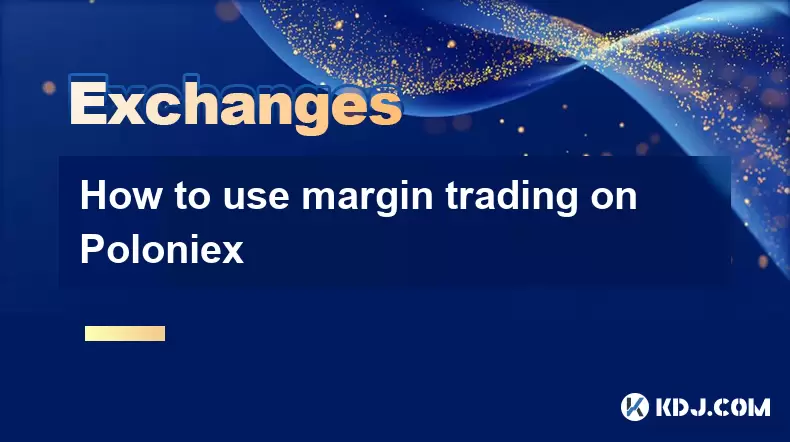
How to use margin trading on Poloniex
Aug 08,2025 at 09:50am
Understanding Margin Trading on Poloniex
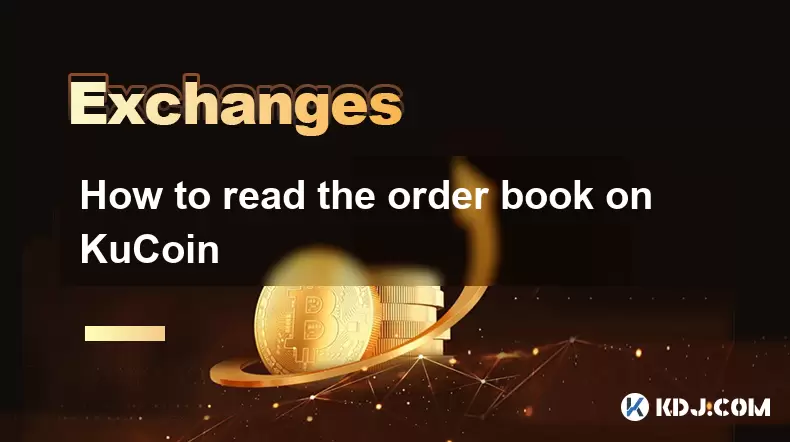
How to read the order book on KuCoin
Aug 10,2025 at 03:21pm
Understanding the Order Book Interface on KuCoinWhen accessing the order book on KuCoin, users are presented with a real-time display of buy and sell ...
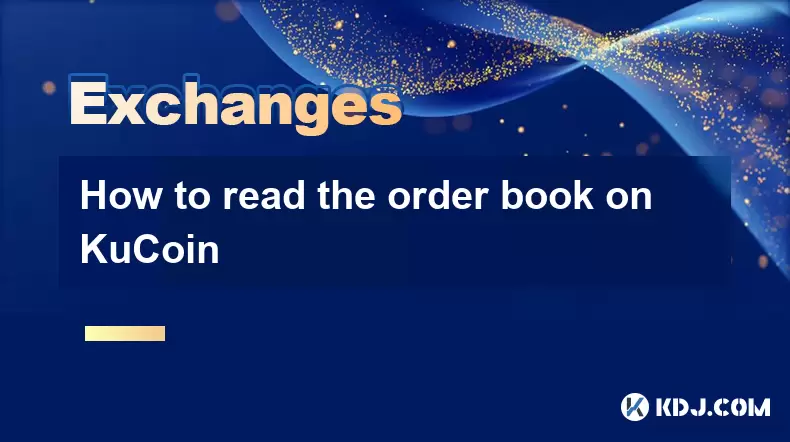
How to read the order book on KuCoin
Aug 12,2025 at 02:28am
Understanding the Basics of Staking in CryptocurrencyStaking is a fundamental concept in the world of blockchain and cryptocurrencies, particularly wi...
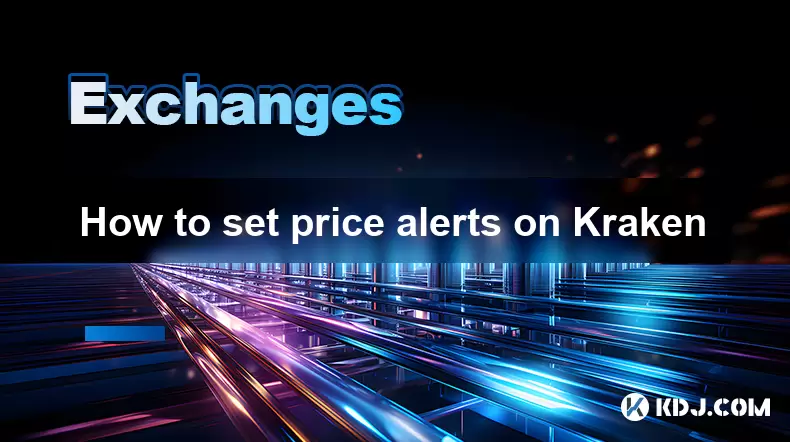
How to set price alerts on Kraken
Aug 11,2025 at 08:49pm
Understanding Price Alerts on KrakenPrice alerts on Kraken are tools that allow traders to monitor specific cryptocurrency pairs for price movements. ...
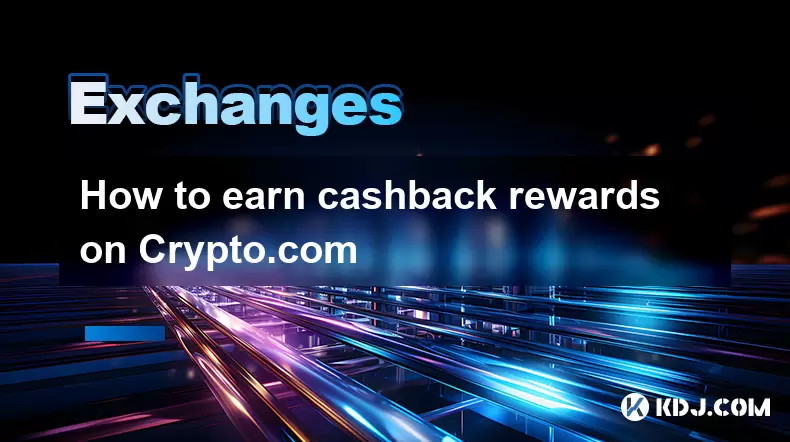
How to earn cashback rewards on Crypto.com
Aug 12,2025 at 02:08am
Understanding Cashback Rewards on Crypto.comCashback rewards on Crypto.com are a feature designed to incentivize users to spend using their Crypto.com...
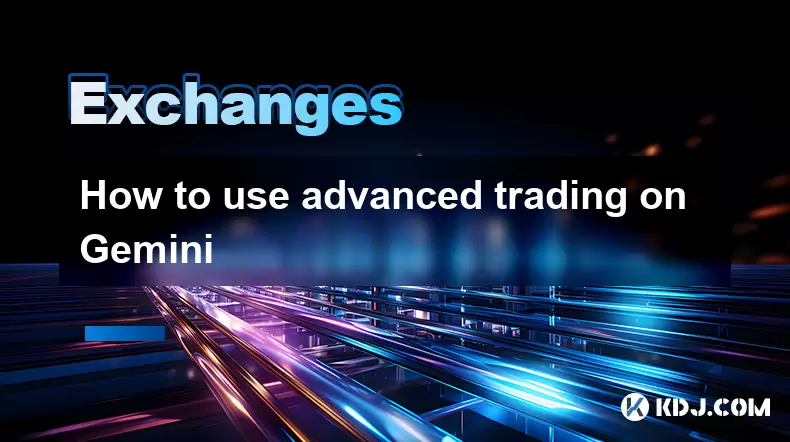
How to use advanced trading on Gemini
Aug 08,2025 at 04:07am
Understanding Advanced Trading on GeminiAdvanced trading on Gemini refers to a suite of tools and order types designed for experienced traders who wan...

How to use margin trading on Poloniex
Aug 08,2025 at 09:50am
Understanding Margin Trading on Poloniex

How to read the order book on KuCoin
Aug 10,2025 at 03:21pm
Understanding the Order Book Interface on KuCoinWhen accessing the order book on KuCoin, users are presented with a real-time display of buy and sell ...

How to read the order book on KuCoin
Aug 12,2025 at 02:28am
Understanding the Basics of Staking in CryptocurrencyStaking is a fundamental concept in the world of blockchain and cryptocurrencies, particularly wi...

How to set price alerts on Kraken
Aug 11,2025 at 08:49pm
Understanding Price Alerts on KrakenPrice alerts on Kraken are tools that allow traders to monitor specific cryptocurrency pairs for price movements. ...

How to earn cashback rewards on Crypto.com
Aug 12,2025 at 02:08am
Understanding Cashback Rewards on Crypto.comCashback rewards on Crypto.com are a feature designed to incentivize users to spend using their Crypto.com...

How to use advanced trading on Gemini
Aug 08,2025 at 04:07am
Understanding Advanced Trading on GeminiAdvanced trading on Gemini refers to a suite of tools and order types designed for experienced traders who wan...
See all articles


















































































